I like to find small, painted rocks (especially with encouraging messages) in unexpected places. On a recent day trip, we found one, big painted rock!
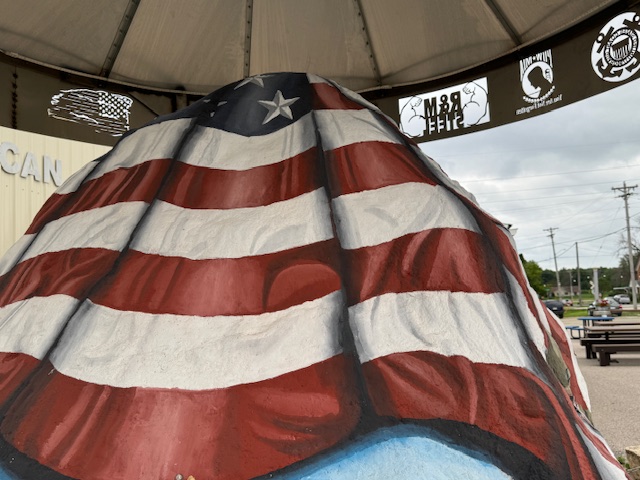
I didn’t know there was a The Freedom Rock project but according to its website: the project has a “goal of at least one Freedom Rock in every state in the union”, to honor America’s Veterans.

A Freedom Rock is a painted boulder depicting “unique to the state” military scenes, painted by Ray “Bubba” Sorensen II. Minnesota has seven Freedom Rocks in seven different areas throughout the state.
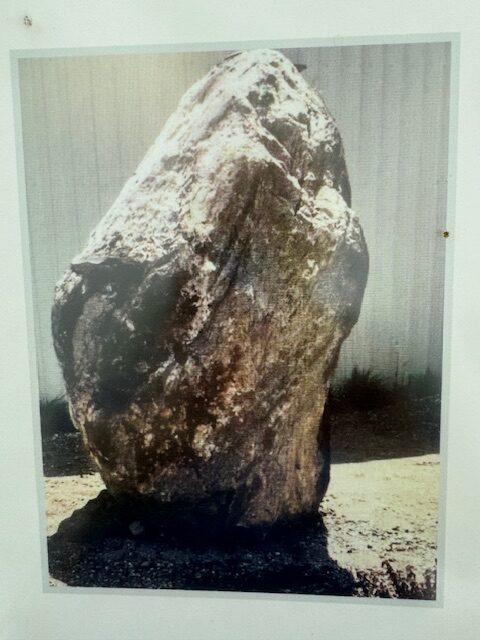
When we arrived in Kasson, Minnesota I noticed a huge, painted boulder across the street from the Clock Shop, at the American Legion on Main Street. It caught my eye because on our way to Kasson we had to take a road detour…and on that detour we noticed this stout, old limestone building on the side of the road, with a plaque and flag flying high. We stopped to check it out and discovered it was an old military recruitment station for the Civil War.
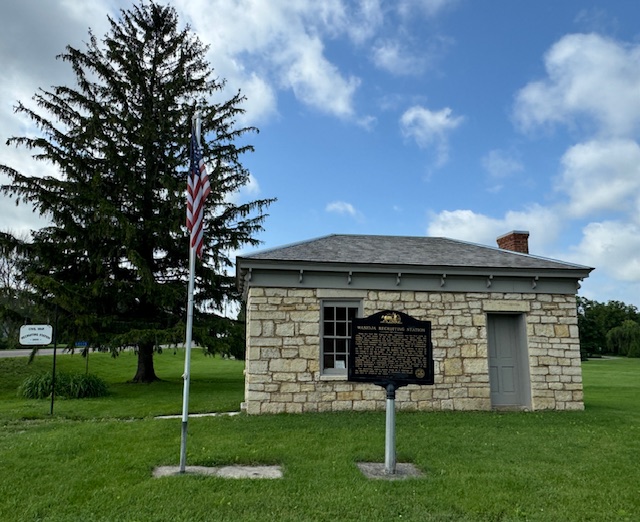
We didn’t know such buildings existed. I also had forgotten the important role Minnesota played in the Civil War.

The plaque states that Minnesota was the first state to offer and send troops to aid the Union cause. Recruits from this station in Wasioja, MN totaled 200. The building, built in 1855, has been beautifully restored, and is there for all to see and remember.
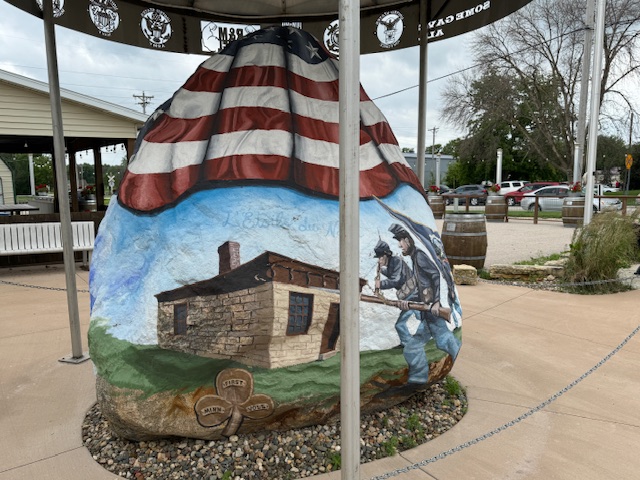
So, I was surprised when I stepped out of the car in Kasson and noticed the building we had just seen an hour earlier painted on a huge rock! We walked over to explore some more!
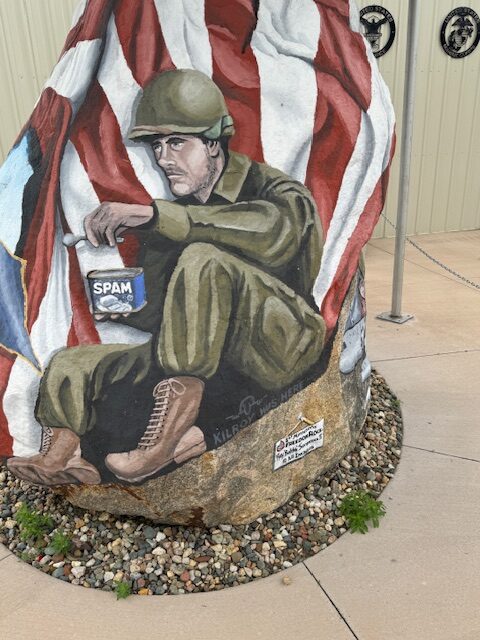
On another side of the rock was a painting of a WWII veteran holding a can of SPAM. Good old Minnesota SPAM. There were 100 million pounds of Hormel SPAM shipped to our troops during WWII.
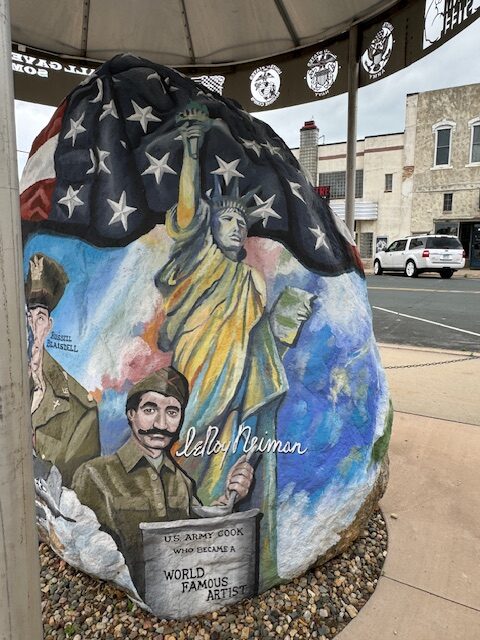
Another side of the rock was dedicated to a St. Paul man who was a cook in WWII and became a world-famous artist, LeRoy Neiman, when he got out of the service (although I had never heard of him.)
One more scene depicted “Kiddy Car Airlift” which was organized by Minnesota US Air Force Chaplain Colonel Russell L. Blaisdell. He rescued orphans and staff from Seoul during the Korean War. This was another mission I had not heard about.

And amidst this day of military blitz I thought of my own father. A few days before this day trip, while talking with family, I learned my father, who served in WWII, had the nickname of Doc Kelly. Apparently, the troops usually choose nicknames from last names, therefore “Kelly”, and my dad was a medic, assisting doctors, therefore “Doc”. I had not heard this before.
It was a great morning of discoveries and learning.